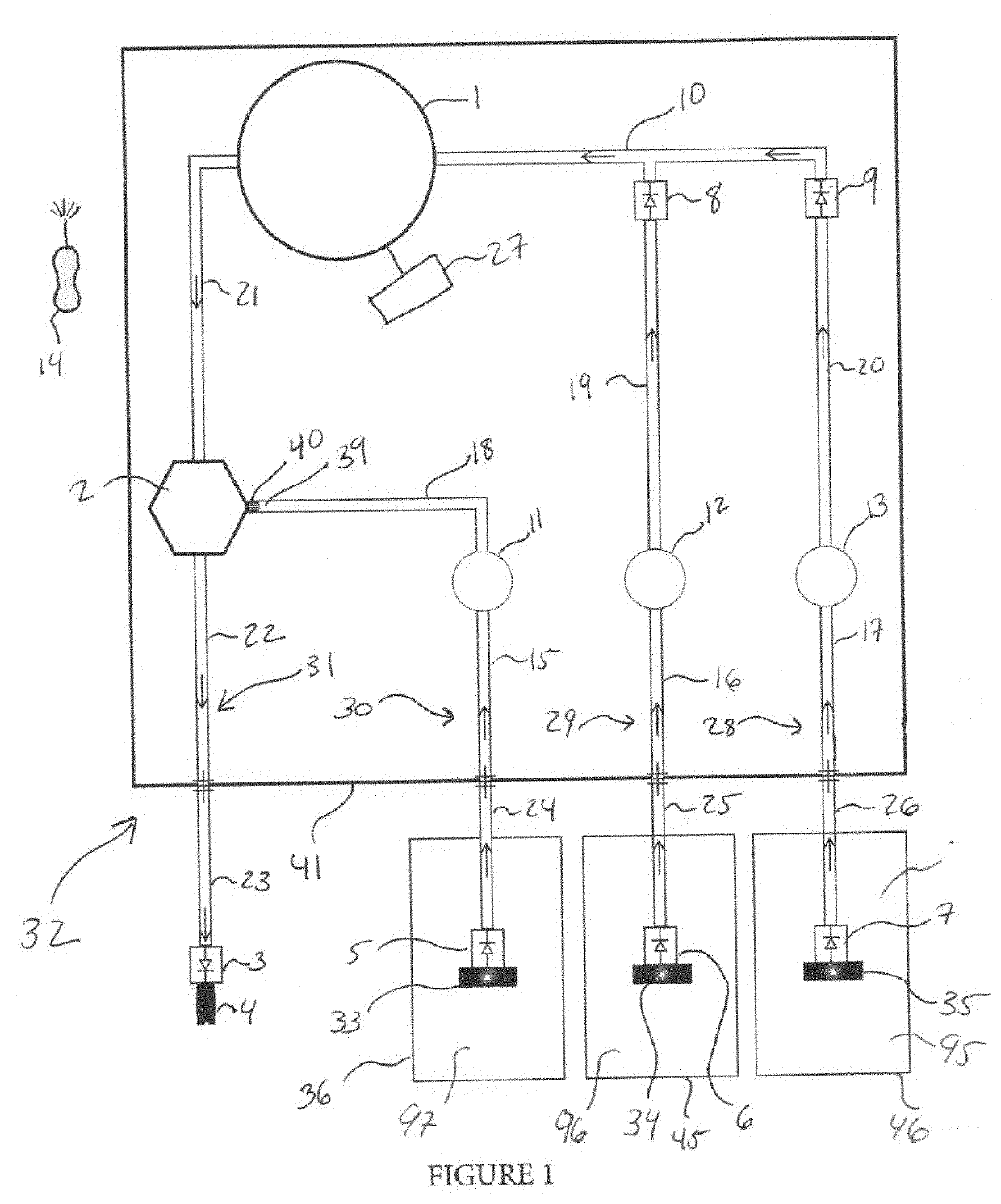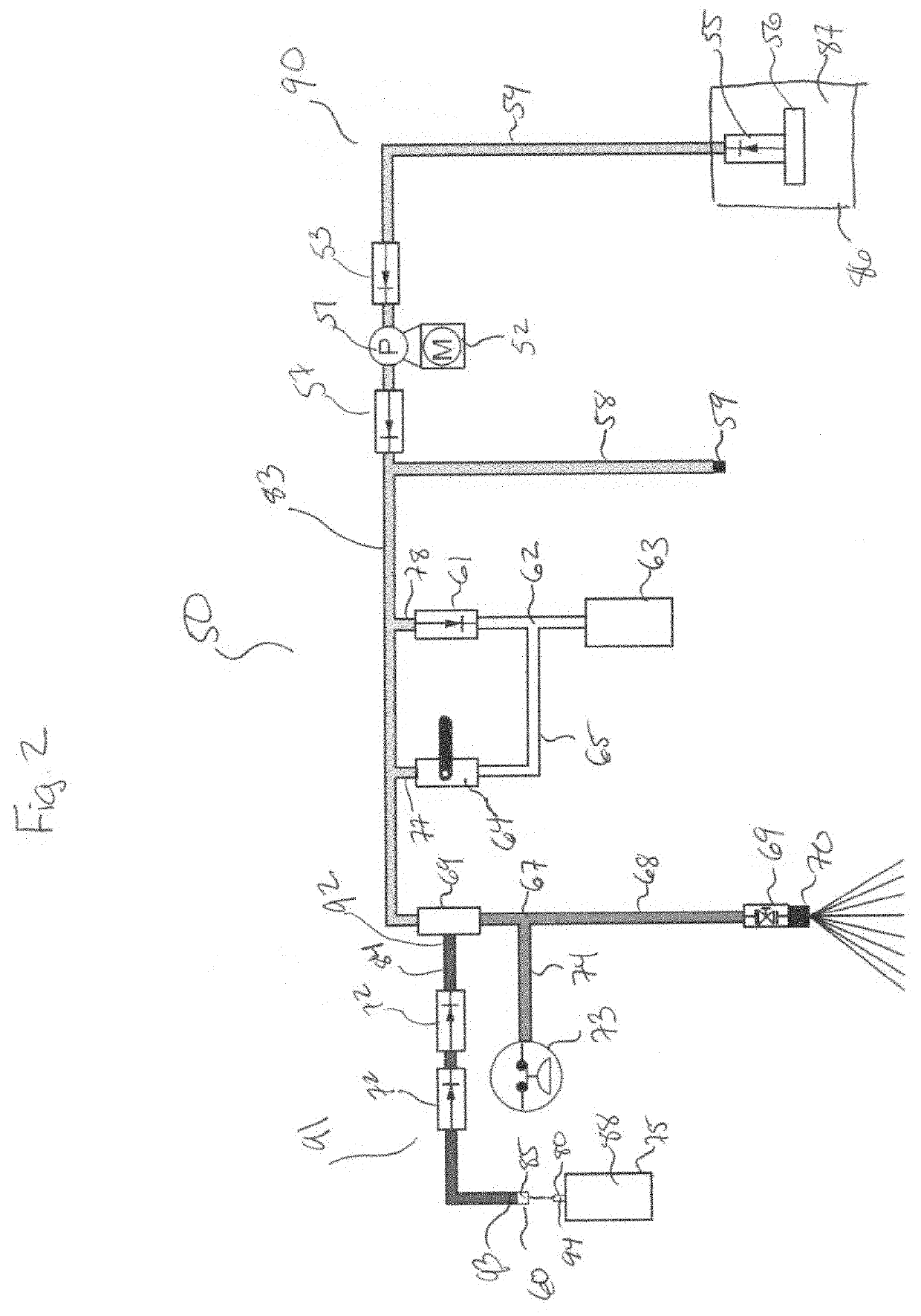Damage from floods and storms such as hurricanes or tornadoes, beyond causing catastrophic destruction of buildings and structures, leaves behind heavy contamination including mud,
dirt, debris, and microorganisms such as mold and
yeast (fungi), and
bacteria.
Additionally,
water damage caused by leaking and broken pipes and condensation can create environments where contamination by similar microorganisms can allow them to reproduce, thrive, and cause problems.
Remediation and restoration of contaminated buildings and structures often involve substantial manual removal efforts such as wiping, scraping, and mopping, but both organic materials and microorganisms normally invade hard-to-reach areas including cracks and crevices in surfaces such as wood, under carpet
pile, beneath flooring and tiles, and behind wall coverings.
The residual contamination remaining behind after even careful manual cleaning can lead to ongoing structural degradation such as wood rot,
air contamination that can cause severe health issues such as from allergies, and horrible odors that make working or living in contaminated structures very difficult or even impossible.
Even though requiring a higher level of water for survival, degradative and
pathogenic bacteria can find harbors of sufficient
moisture in microenvironments where they can continue to survive, especially where substrates maintain
residual moisture, organic contaminants have built up, or in areas where dehumidification efforts are less efficient.
In addition to causing
disease and health issues, remaining colonies of fungi and bacteria can cause structural damage including rotting of cellulosic materials and
corrosion of metals and other materials of construction.
Remaining biofilm and biodeposits can lead to corrosive destruction of surfaces including metals such as
carbon steel, stainless steel, aluminum,
copper, and
brass, and non-metals including concrete, polymers and
polymer composites, and plastics.
Even materials normally resistant to microbiological
corrosion and degradation can be damaged by microorganisms thriving on adjacent materials such as wood that are better recognized for their supporting environment.
Where contamination has already occurred such as during floods and storms,
residual moisture from just
high humidity and elevated temperatures can leave wood components susceptible to rotting organisms.
Chlorine and its other related compounds including
hypochlorite and
chlorine dioxide have application concerns due to direct
chemical attack of materials, along with newer issues over creation of hazardous and potentially carcinogenic byproducts.
However, the
antimicrobial efficacy and chemical reactivity of the peroxide compounds is still often insufficient to address all the contamination They rapidly degrade to their inactive byproducts especially in the presence of heavy organic
fouling and metals and
metal ions including iron,
manganese,
copper, silver,
platinum, and
titanium, and they are rapidly broken down to inactive molecules by enzymes including
catalase,
peroxidase, and other less common ones normally present in all of the targeted microorganisms.
The anti-peroxide
reaction rate for
catalase has been reported as high as 5,000,000 molecules destroyed per
enzyme molecule per second, making sufficient treatment by, for example, 8%
hydrogen peroxide, almost impossible to achieve; in the presence of substantial microbial populations and / or substantial organic contaminant presence, the
hydrogen peroxide is inactivated faster than it can reach the targeted surfaces.
However, as the cells both produce and are attacked by
hydrogen peroxide, there are
natural processes that operate to limit the lifetime of and turn off the destructive capability of
excess hydrogen peroxide.
Lower concentration and limited contact by peroxide serve to activate these defense mechanisms, and, therefore,
hydrogen peroxide has been historically much less beneficial an
antimicrobial than desired.
Some organic acids are able to stabilize the
enzyme deformation and prolong the peroxide residual presence, but this improvement still has a limited life.
Even though this does not create bacterial strains specifically resistant to
hydrogen peroxide, it makes killing the organisms much more challenging.
Even with extremely high concentrations of peroxide, an antimicrobial treatment by
hydrogen peroxide on its own can prove ineffective.
Perhydroxyl anions, though, are not very stable in aqueous solutions, and they rapidly convert to a wide variety of very reactive free radicals including perhydroxyl (HOO.
The enhanced activity of these alkaline initiated radicals against microbial and organic contaminants, in
spite of the
rapid rate of peroxide activation, has been of limited practical value, as these structures rapidly break down to non-reactive species and have extremely
short life, leading to poor efficiency, product over-application, and substantial waste as the degraded compounds become ineffective.
Therefore, actual field applications of peroxide compounds at
elevated pH's have historically been inefficient, inconsistent, and undependable.
This beneficial effect can not be achieved with historic application equipment, as ratios of the blends were not maintained as optimized, the rate of degradation was excessive, and degradation rates did not leave sufficient activity to produce the targeted results.
Application of technologies based on peroxide and alkali combination through a dual and simultaneous feed has not been commercially viable.
The mixture of the peroxide and alkaline compositions creates an extremely violent, exothermic and explosive reactions with release of substantial heat and flammable
oxygen that literally threatens the lives of application personnel.
Heat and
pressure buildup are known to cause runaway degradation and explosive reactions, especially when triggered by even minimal contamination from metals or organic compounds, that can damage feed lines, chemical containers, and mixing systems, as well as lead to injuries and
chemical exposure.
Attempts to use lower concentration peroxide compounds such as less than 8% hydrogen peroxide can slightly reduce the
threat, but they are not sufficiently active to accomplish the targeted application needs on their own.
Further, these acid compounds help distort the
physical structure of enzymes including
catalase that destroy peroxide compounds such as hydrogen peroxide at unbelievably rapid rates, at least temporarily inactivating the enzymes and allowing much of the peroxide compositions to survive and achieve their targeted benefits in removal and destruction of microbial and organic contaminants
However, peroxide compositions, especially in acid environments below about pH 6 where the acid serves to activate the peroxide components to stronger oxidizers, will destroy both the targeted organic and
microbial contaminants as well as the organic acids, themselves.
In
spite of this, though,
oxidative degradation by peroxide compositions of the chosen organic acids worsened by factors including increasing time, temperature, and pressure, results in a less than optimum group of organic acids that creates inefficient applications, requirements for wasteful overfeed, and inconsistent treatment that leaves voids and openings for rapid failure of restoration and remediation.
However,
oxidative degradation of the organic acid by the peroxide compounds rapidly changes the original organic acid components from their original
chemistry and concentrations.
Even with only a limited extension of
contact time between the peroxide composition and the organic acid composition in standard pump-up sprayers or pressure washers, a large percentage of the
caprylic acid would be oxidized to the much less effective
heptanoic acid.
 Login to View More
Login to View More 

